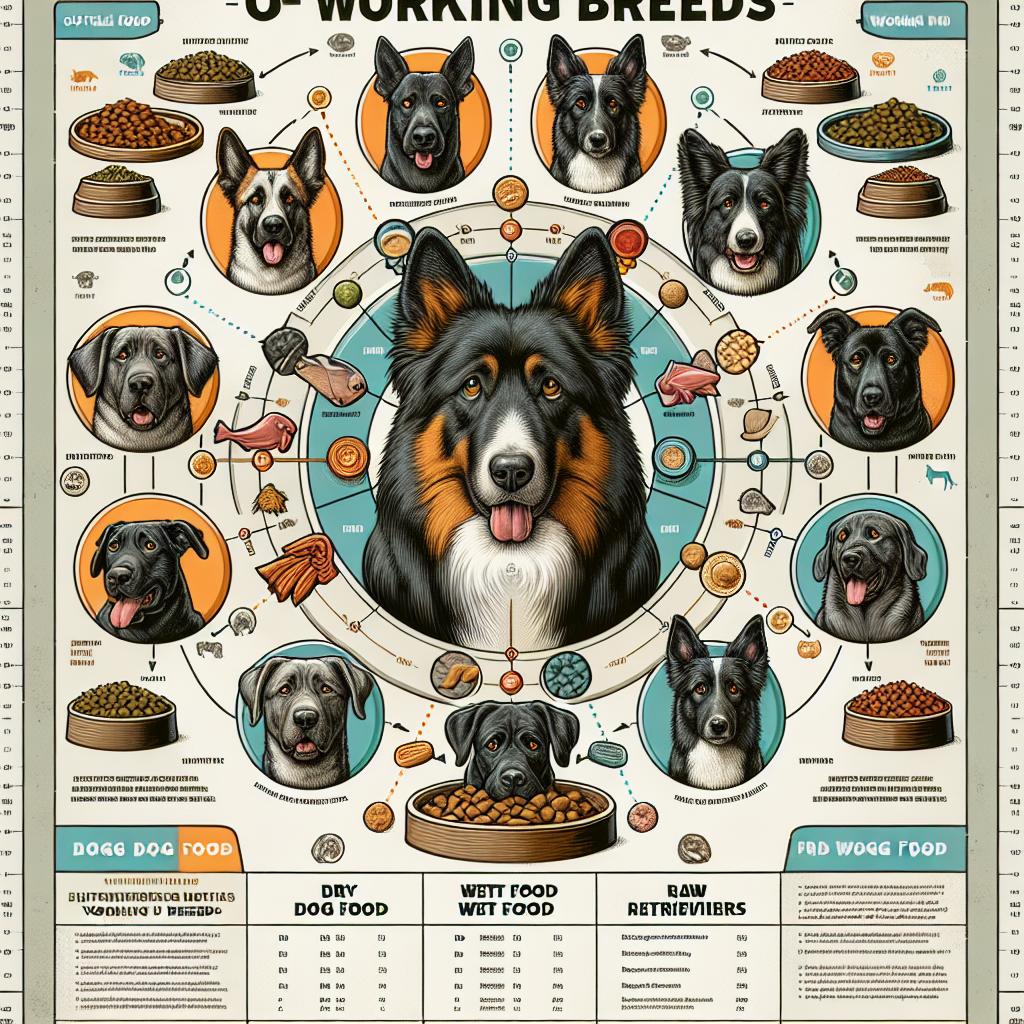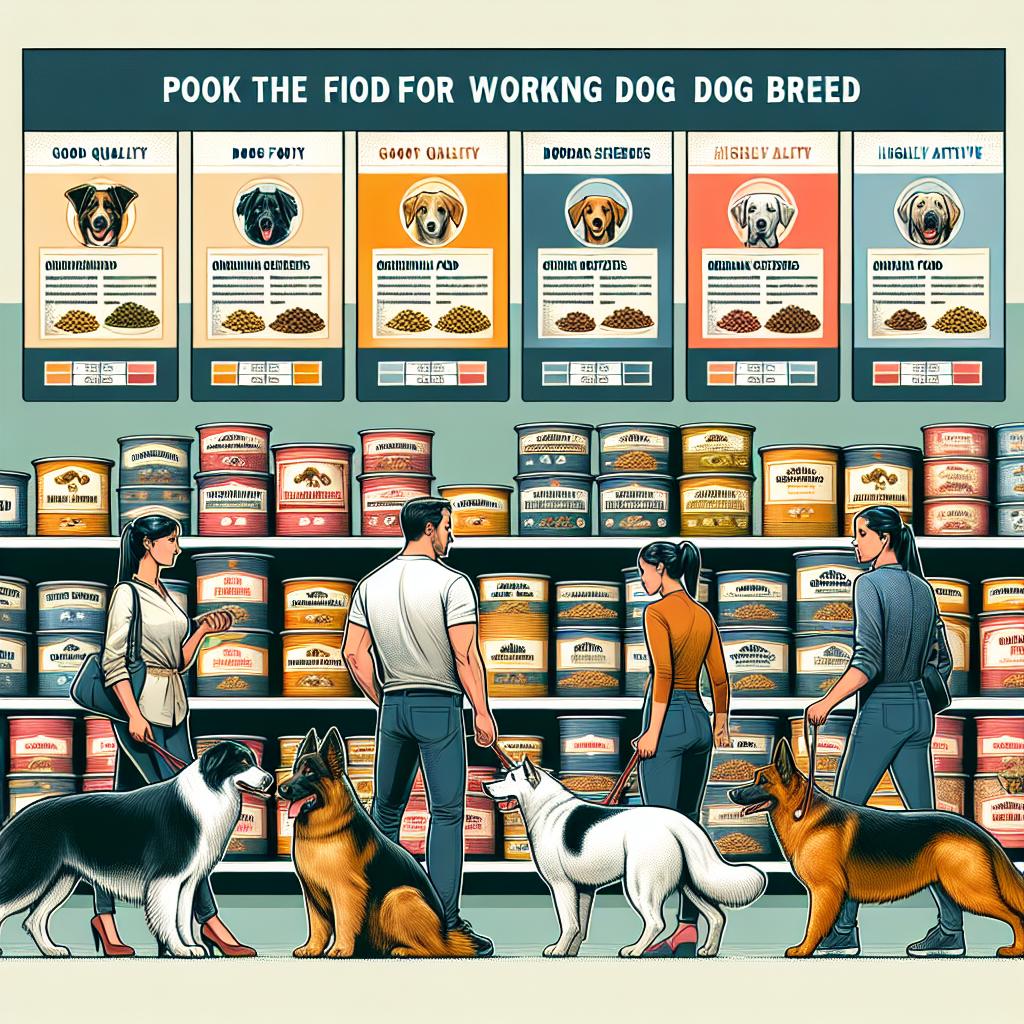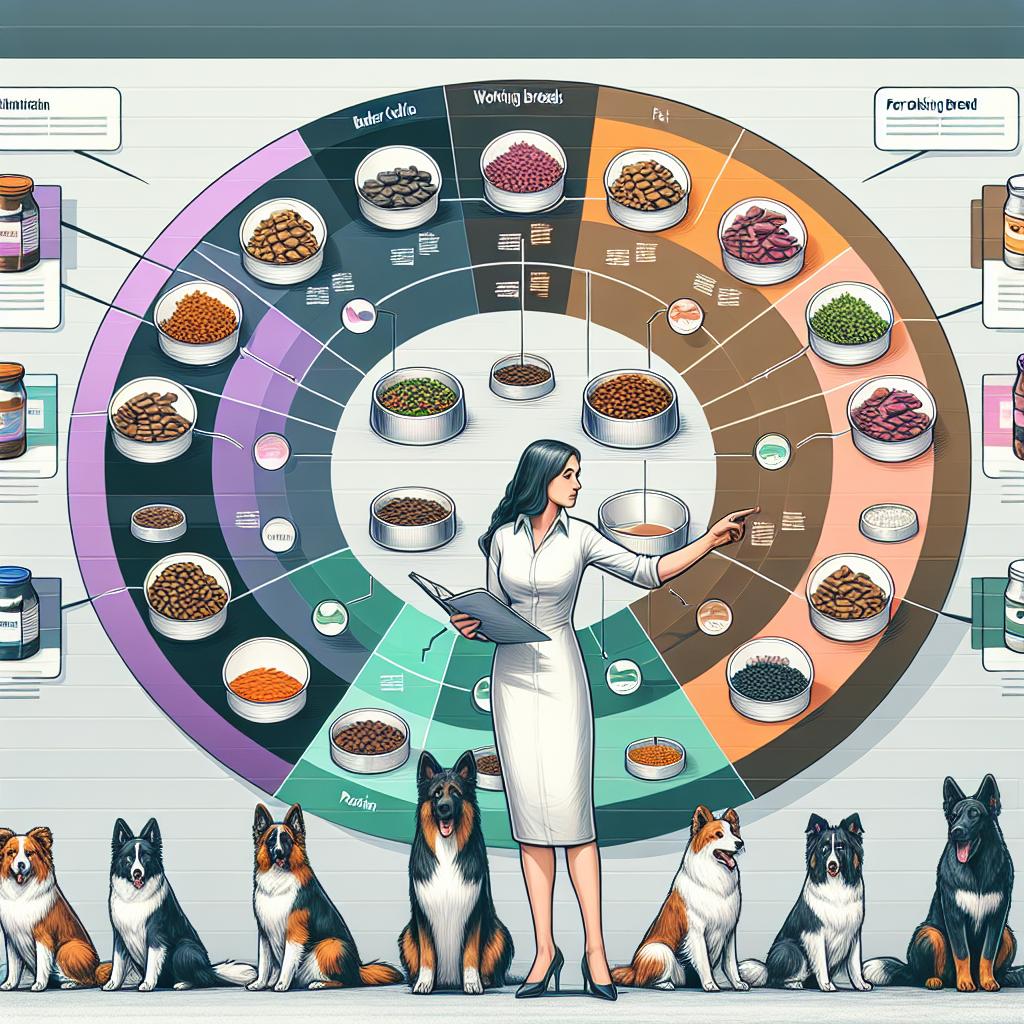When it comes to fueling the energy and enthusiasm of working breeds, choosing the right dog food is a decision that extends far beyond the simple allure of appealing packaging or catchy marketing slogans. These remarkable canines, bred for stamina, strength, and intelligence, require a diet that supports their unique physical demands and versatile roles, whether they are herding, hunting, or providing service. The vast array of dog food options available can leave even the most diligent pet owner feeling overwhelmed. In this article, we will explore the key considerations for selecting the ideal nutrition tailored to the specific needs of working breeds, ensuring that your four-legged companion has the energy and vitality to thrive in their daily endeavors. From understanding the nutritional components to recognizing the signs of quality, we’ll guide you through the process of making an informed choice that reflects the hardworking nature of your beloved canine.
Understanding the Nutritional Needs of Working Breeds
Working breeds possess unique physical and mental demands that require careful consideration when it comes to their diet. These dogs often engage in strenuous activities that can lead to significant calorie burn and nutrient depletion. Therefore, it’s crucial to provide them with a balanced diet that supports their high energy levels and maintains optimal health. When selecting dog food, look for formulations that are high in protein, rich in healthy fats, and contain complex carbohydrates. This combination ensures that your dog gets the energy they need for endurance and strength while also promoting muscle recovery and overall vitality.
Alongside macronutrients, the inclusion of vitamins and minerals plays a vital role in supporting a working breed’s immune system and overall function. Key nutrients such as calcium, phosphorus, and omega fatty acids should be prioritized to maintain strong bones and promote healthy skin and coat. Consider the following essential nutrients when choosing dog food:
- Omega-3 and Omega-6 Fatty Acids: Promotes a shiny coat and healthy skin.
- Antioxidants: Supports immune health and combats oxidative stress.
- Glucosamine and Chondroitin: Aids in joint health, essential for active dogs.
Here’s a simple table that summarizes some recommended nutrient profiles for dog food suitable for working breeds:
| Nutrient | Recommended Amount |
|---|---|
| Protein | 25-30% |
| Fat | 15-20% |
| Fiber | 3-5% |
| Calcium | 1.0-1.5% |
| Omega-3 Fatty Acids | 0.3-0.5% |
By ensuring that your working breed receives a nutritionally balanced diet tailored to their unique needs, you’ll help them thrive in their demanding roles. Proper nutrition will not only enhance their performance but also contribute to a happy and healthy life. Always consult with a veterinarian to tailor a feeding plan specific to your dog’s individual requirements and activity level.

Evaluating Ingredients: What Makes a Quality Dog Food
When selecting dog food for working breeds, it’s essential to look beyond the marketing claims and thoroughly examine the ingredient list. Quality dog food should start with high-quality protein sources, as working dogs require more energy and muscle support than sedentary breeds. Look for words like “chicken,” “beef,” or “salmon” listed as the primary ingredient. Additionally, the presence of whole grains like brown rice or oats is beneficial, providing sustained energy for active days. Avoid foods that list by-products or vague terms like “meat meal” without clear sourcing.
Nutritional balance is also key; thus, consider dog foods that incorporate a mix of fruits and vegetables, which are essential for vitamins and antioxidants. These additions help boost the immune system and overall well-being. Healthy fats, such as omega-3 and omega-6 fatty acids, contribute to a shiny coat and well-functioning joints, which is crucial for working dogs that may face physical strains. To simplify your decision-making, here’s a quick comparison of what to look for:
| Component | Importance |
|---|---|
| Protein Source | Supports muscle maintenance and energy |
| Whole Grains | Provides sustained energy |
| Fruits & Vegetables | Boosts immune system and provides vitamins |
| Healthy Fats | Promotes coat health and joint function |
Identifying Special Dietary Requirements for Active Dogs
Understanding the specific dietary needs of active dogs is vital for their performance and overall health. Working breeds, in particular, demand energy-rich diets that support their physical exertion levels. To identify these special requirements, consider factors such as age, activity level, and health conditions. Additionally, monitoring their body condition score can help assess whether they are receiving the proper nutrients to sustain their energy levels without leading to obesity.
When selecting food for active dogs, focus on high-quality ingredients that provide optimal nutrition. Here are some key elements to look for in their diet:
- Proteins: Essential for muscle repair and energy.
- Fats: Provide a concentrated energy source, particularly beneficial for working breeds.
- Carbohydrates: Ensure enough fuel for endurance activities.
- Vitamins and Minerals: Support vital functions and overall health.
Additionally, consider the use of supplements such as omega fatty acids for joint health and glucosamine for recovery. A proper balance of these nutrients can help maintain your dog’s stamina and well-being, enabling them to perform their best.

Tips for Transitioning Your Dog to New Food Choices
Transitioning your canine companion to a new diet doesn’t have to be a challenge. Start by mixing a small amount of the new food with the current diet, gradually increasing the ratio of new food over the course of about a week. This slow transition helps prevent digestive upset and allows your dog to adjust to the new flavors and textures. Some tips to consider include:
- Monitor Reactions: Keep an eye on your dog’s stool consistency and energy levels during the transition.
- Keep it Consistent: Stick to regular feeding times to maintain your dog’s routine.
- Stay Patient: If your dog is hesitant to eat, don’t force it; give them time to adapt.
Additionally, involving your dog’s favorite treats can make the process smoother. You might incorporate a small amount of the new food into their regular treats or mix it with the food they already love. Remember to keep the portions in mind to maintain balance. Below is a handy table to help track your transition plan:
| Day | New Food Ratio | Old Food Ratio |
|---|---|---|
| 1-2 | 25% | 75% |
| 3-4 | 50% | 50% |
| 5-6 | 75% | 25% |
| 7+ | 100% | 0% |
Q&A
Q&A: How to Choose the Right Dog Food for Working Breeds
Q1: What makes working breeds different from other dog breeds when it comes to nutrition?
A1: Working breeds are often more active and have higher energy demands than many other breeds. They require a diet that provides sufficient calories, protein, and essential nutrients to support their daily activities and physical endurance. Consideration needs to be given to their specific roles, whether they’re herding, guarding, or serving as service dogs, as their nutritional needs can vary based on their work intensity and duration.
Q2: What should I look for in the ingredients list when selecting dog food for a working breed?
A2: Prioritize high-quality protein sources as the first ingredient, such as chicken, beef, or fish. Look for formulas that include whole grains (like brown rice or oats) or wholesome vegetables (like sweet potatoes) for energy. Healthy fats, particularly omega-3 and omega-6 fatty acids, are essential for coat health and overall vitality. Also, consider foods that include added vitamins and minerals to support joint health and muscle recovery.
Q3: What is the difference between “working dog food” and “regular dog food”?
A3: “Working dog food” typically contains higher levels of protein and fat to meet the energy needs of active dogs. Regular dog food is formulated for average activity levels and may not provide enough calories or nutrients for working breeds that engage in heavy labor. It’s essential to choose a formulation that matches their activity level rather than treating them like a standard house pet.
Q4: Are there specific dietary requirements based on the type of work my dog does?
A4: Yes, different types of working dogs may have varying nutritional needs. For instance, a sled dog might require a diet high in fat for endurance, whereas a herding dog might benefit more from a balanced diet rich in protein to support muscle strength. Consulting with a veterinarian can help tailor the diet to your dog’s specific job and energy expenditure.
Q5: How do I determine the appropriate portion size for my working breed?
A5: Start by consulting the feeding guidelines on the dog food packaging, which usually offer recommendations based on the dog’s weight. However, you should adjust portion sizes based on your dog’s activity level, age, and overall health. Observe your dog’s body condition—if they appear too thin or overweight, gradually adjust their food intake. Regular weigh-ins and consultations with your vet can also assist in finding the right balance.
Q6: Can working breeds have food allergies, and how would I know?
A6: Yes, just like any other breed, working dogs can have food allergies or sensitivities. Common signs include itching, gastrointestinal upset, or changes in coat condition. If you suspect an allergy, consult your veterinarian. They may suggest an elimination diet to identify problematic ingredients. It’s crucial to ensure that even with dietary restrictions, your dog receives adequate nutrition for their active lifestyle.
Q7: Are there any misconceptions about dog food for working breeds that I should be aware of?
A7: One common misconception is that all “premium” dog foods are suitable for working breeds. While high-quality ingredients are important, the formula must also be tailored for energy needs. Another misconception is that working dogs do not require supplementation. Depending on their diet and workload, some working dogs may benefit from additional joint health supplements, especially as they age or work hard on a regular basis.
Q8: How often should I feed my working breed?
A8: Most active dogs do well with two meals a day; however, some owners opt for three smaller meals to maintain energy levels. It’s important to consider timing as well—feeding before or after a heavy workout can impact your dog’s performance and digestion. Aim for consistency, and monitor your dog’s appetite and energy levels to adjust feeding times if necessary.
—
Q9: What role does hydration play in my working breed’s diet?
A9: Hydration is vital for any dog, but it is particularly crucial for working breeds that expend a lot of energy. Ensure your dog has constant access to fresh water, especially before and after intensive activities. Additionally, consider hydrating foods, like wet dog food or adding water to dry kibble, to help promote hydration and supplement their diet.
By keeping these considerations in mind, you’ll be well on your way to providing a balanced and energetic diet tailored to the unique needs of your working breed. Happy feeding!
To Conclude
Choosing the right dog food for working breeds is a decision that goes beyond mere nutrition; it’s an investment in the well-being and performance of your canine companion. With their unique energy demands and physical requirements, working breeds deserve a diet that fuels their passion and supports their hard-working nature. As you’ve explored the various factors—such as protein levels, ingredient quality, and specialized formulas—you’re now equipped with the knowledge to select the best options available.
Remember, every dog is an individual with unique needs and preferences. It may take some trial and error to discover the perfect fit for your working breed, but with careful observation and a commitment to their health, you can find a diet that keeps them strong, energetic, and ready for the tasks at hand. Ultimately, a well-fed dog is a happy dog, and a happy dog is an asset to any working environment. With the right food, your loyal partner can continue to thrive, excel, and bring joy to every adventure you share. Here’s to a nourished journey together!

